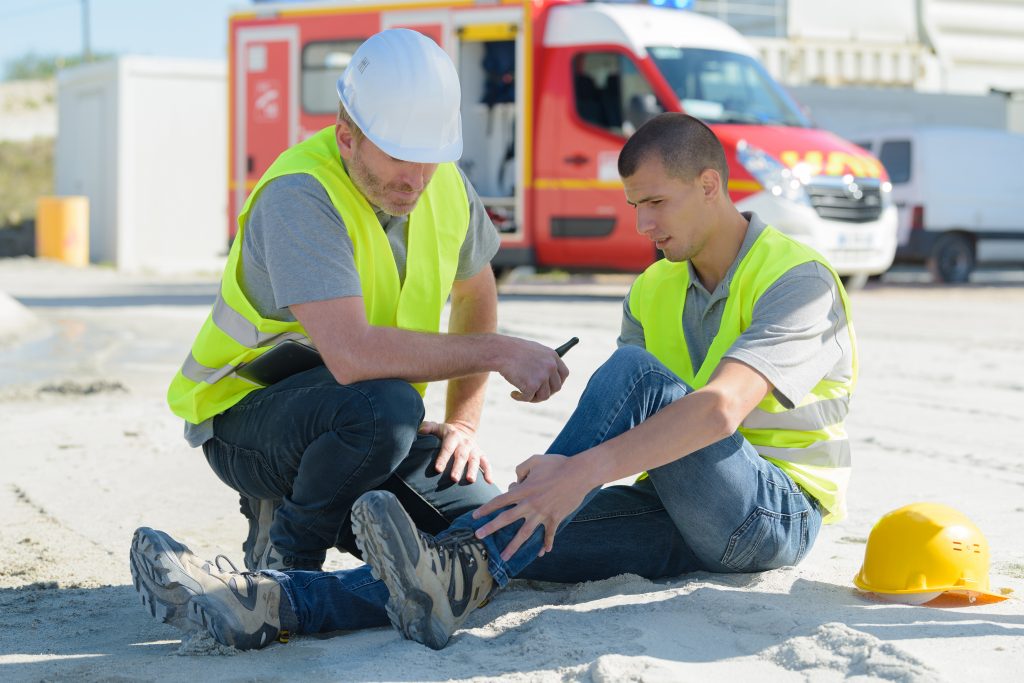
Don’t let safety measures slip: How to prevent slips, trips, and falls at work
By CCOHS
Health & Safety CCOHS falls prevent slips Safety safety culture slip trips workWith over 55,000 workers in Canada injured annually because of fall incidents, workers and managers on the plant floor need to be aware of the risks that come with the job and know how to stay safe.

Photo:© auremar / Adobe Stock
In addition to the thousands of fall-related injuries that make up the 20 per cent of time-loss injuries accepted by workers’ compensation boards or commissions across the country, statistics also show that the majority of falls (67 per cent) happen on the same level resulting from slips and trips. The remaining 30 per cent are falls from heights, like ladders or roofs.
Falls on the same level, like slips and trips, happen when there is some unexpected change in the contact between the feet and the ground or floor. Spills, a leaking machine, or a change in temperature causing a liquid to freeze are just a few examples of such unexpected changes. To prevent these changes and the injuries that can happen from them, there are four factors that should be addressed in preventing fall incidents: good housekeeping; quality of walking surfaces; proper footwear; and pace of walking.
Good housekeeping is good practice for fall prevention
Good housekeeping is the first and one of the most important factors in preventing falls due to slips and trips. It involves cleaning all spills immediately and marking spills and wet areas, mopping or sweeping debris from floors, storing equipment properly, and removing obstacles from walkways and always keeping them free of clutter, like everyday items such as boots or shoes and equipment.
Always secure mats, rugs and carpets with tape, tacks, so they’re flat, and cover cables that cross walkways to prevent trips. Brightly coloured tape may be helpful to draw attention to the potential hazard. You should always make sure that items below eyesight, like file cabinets or storage drawers, are also closed, and keep working areas and walkways well lit, making sure that light bulbs and faulty switches are replaced when necessary.
Provide sure footing with safe flooring
Changing or modifying walking surfaces to provide “sure footing” is an important step in preventing slips and trips. Recoating or replacing floors, or installing mats, pressure-sensitive abrasive strips or abrasive-filled paint-on coating and metal or synthetic decking can further improve safety and reduce the risk of falling. Also, resilient, non-slippery flooring prevents or reduces foot fatigue and can help prevent slips.
Take the right steps with proper footwear
Although it’s the worker who will wear the footwear, employers are responsible for making sure that personal protective equipment (PPE) requirements are being followed in the workplace. When it comes to slips, trips and falls, assess your environment and the type of work to understand if footwear contributes to the risks.
In workplaces where floors may be oily or wet or where workers spend a lot of time outdoors, selecting proper footwear is essential to preventing falls. Since there is no anti-slip footwear ideal for every condition, it is recommended to consult with manufacturers for the available options best suited to the workers’ needs.
Keep up the fall prevention
Workplaces can support a safe environment by identifying and addressing potential risks through regular workplace inspections. For example, this could include inspecting the parking lot, walkways, and other surfaces, and correcting any hazards such as potholes and slippery or uneven surfaces. It is also important to train employees on the steps they can take to avoid falling at work and making sure that they are able to take their time and pay attention to where they are going. Workers should walk at a pace that is suitable for the surface and the tasks they are doing, with their feet pointed slightly outward and make wide turns at corners.
Employers can also reduce risks by installing light sources that provide sufficient light for tasks; providing flashlights for workers to use if they are entering a room with little to no light; and ensuring that the objects workers are carrying or pushing do not prevent them from seeing any obstructions, spills, or other potential hazards.
Because workplace safety is a shared responsibility, employers and employees need to work together to reduce hazards related to slips, trips, and falls. By implementing these tips and measures, falls on the same level can become top of mind, and workers can continue to do their jobs safely.
Prevent-the-Trip Tip
When assessing PPE like footwear for your workers, be sure to consider the following:
-Is the sole made of appropriate anti-slip material for the flooring or walking conditions?
-Is there a risk of the soles quickly becoming dirty or worn out which reduces the slip-resistant qualities?
-Is the shoe secure on the foot (e.g., are laces or a closed back required)?
-Is there a need to provide support to heels and ankles to help reduce twists and sprains?
__________________
The Canadian Centre for Occupational Health and Safety (CCOHS) in Hamilton contributed this article. CCOHS provides information, training, education, management systems and solutions that support health and safety programs and the prevention of injury and illness in the workplace. Visit www.ccohs.ca.
